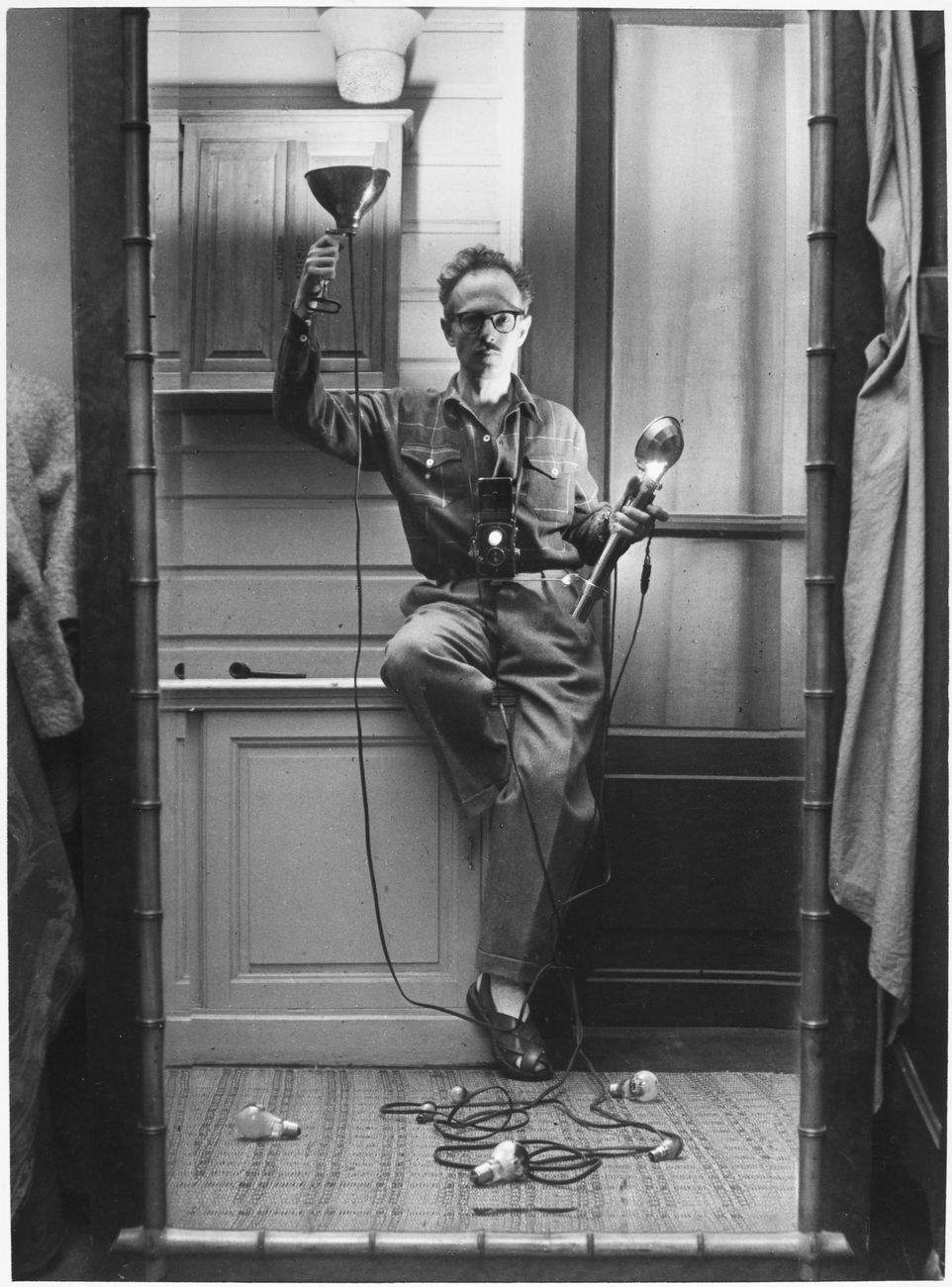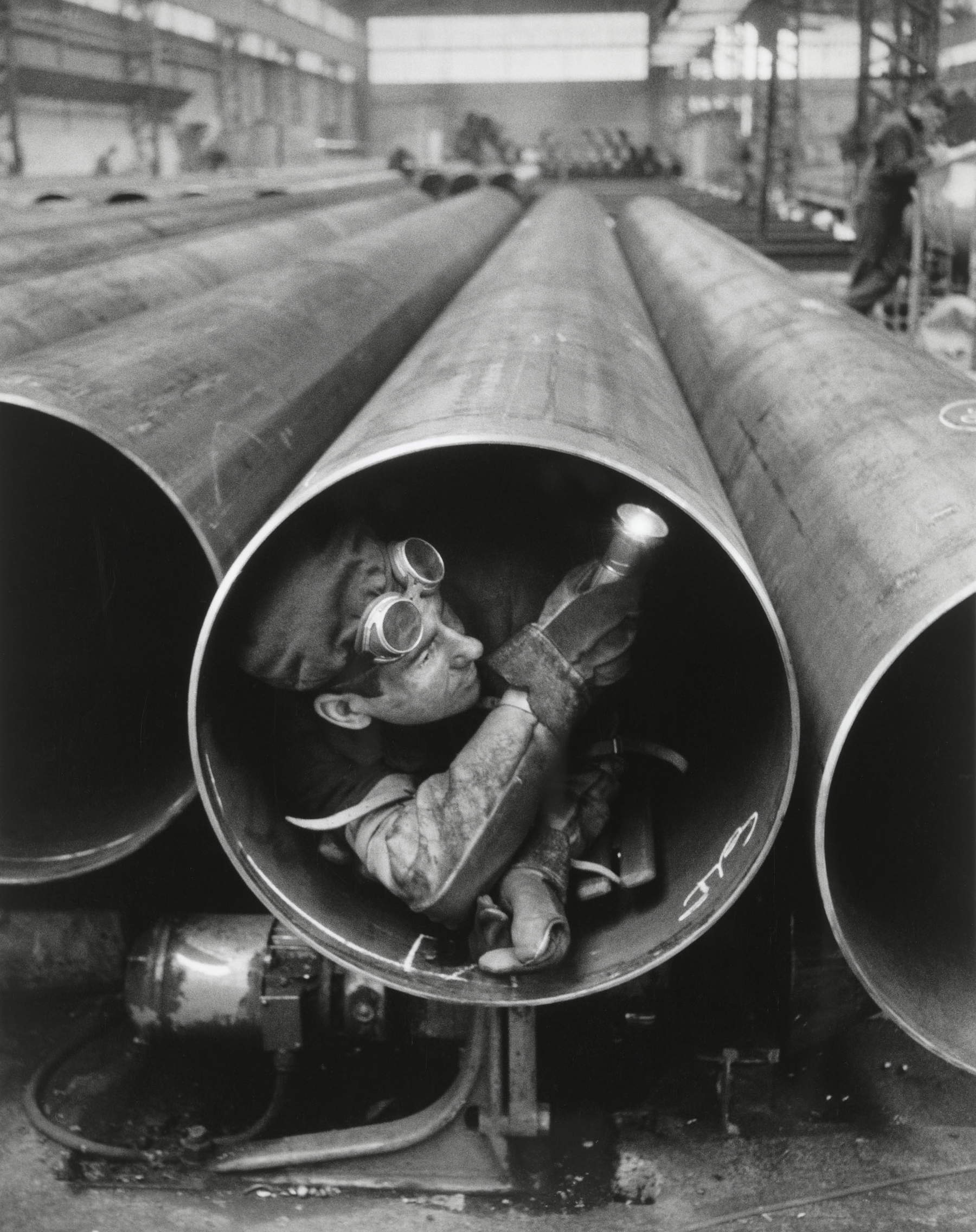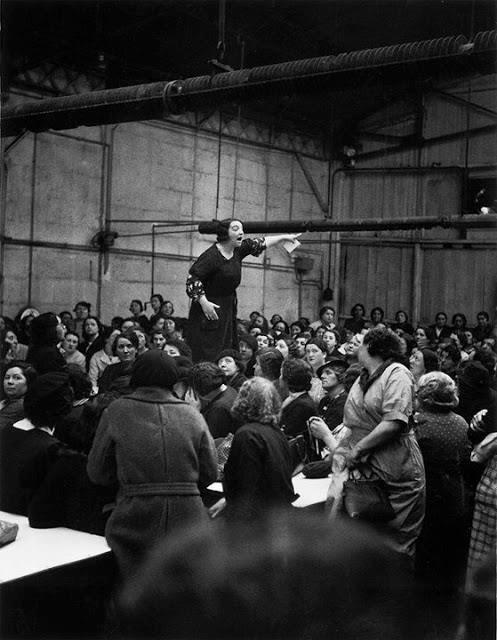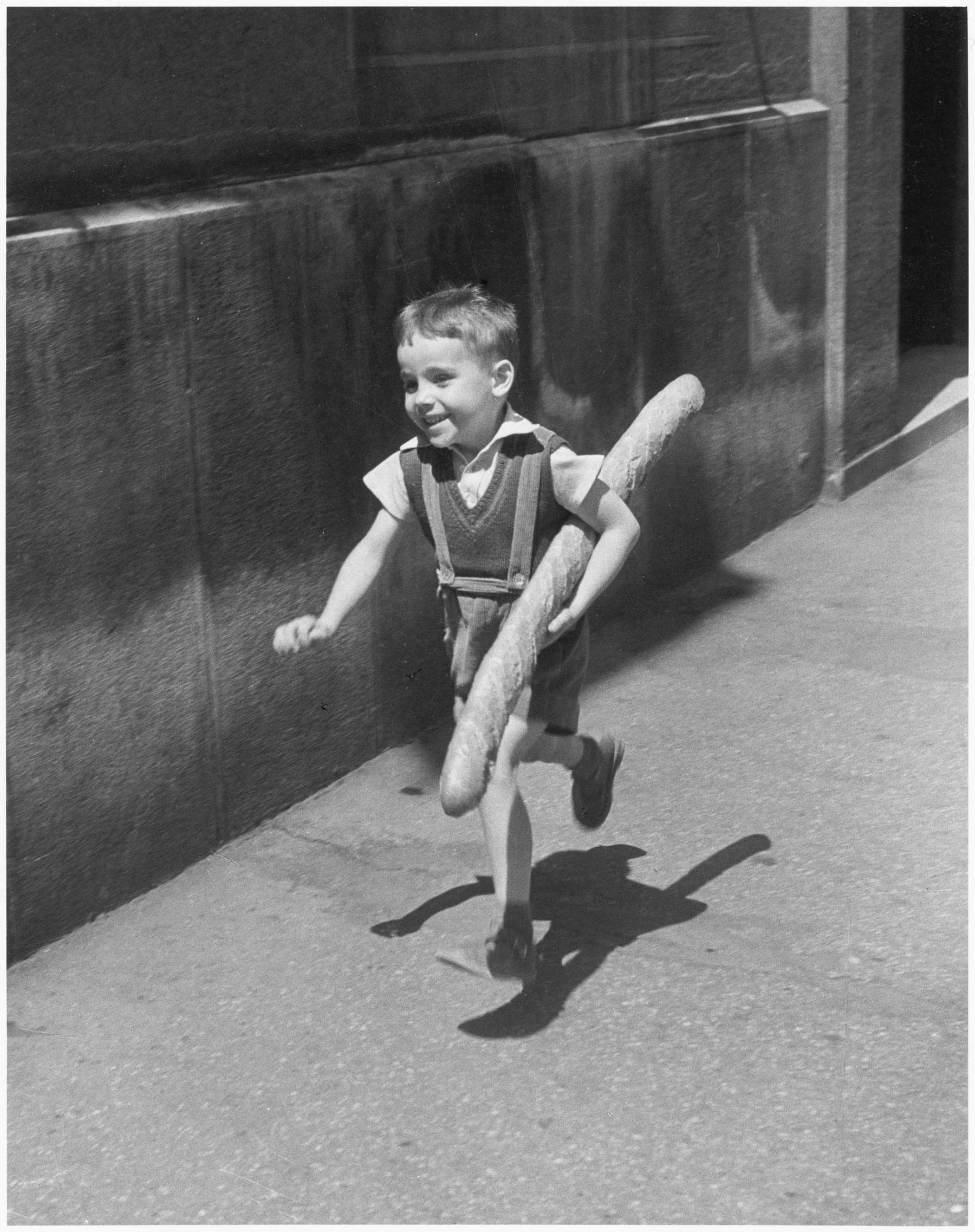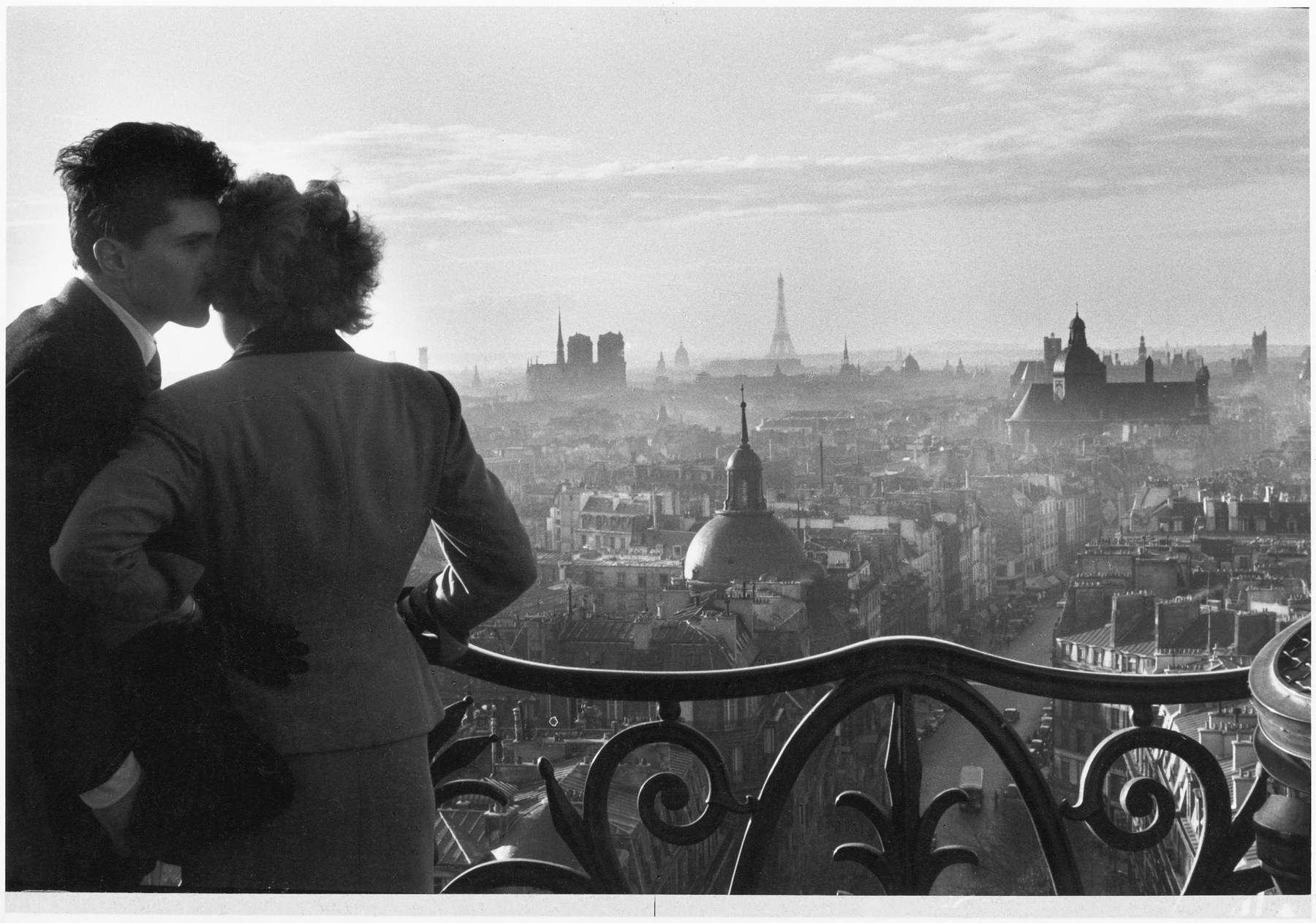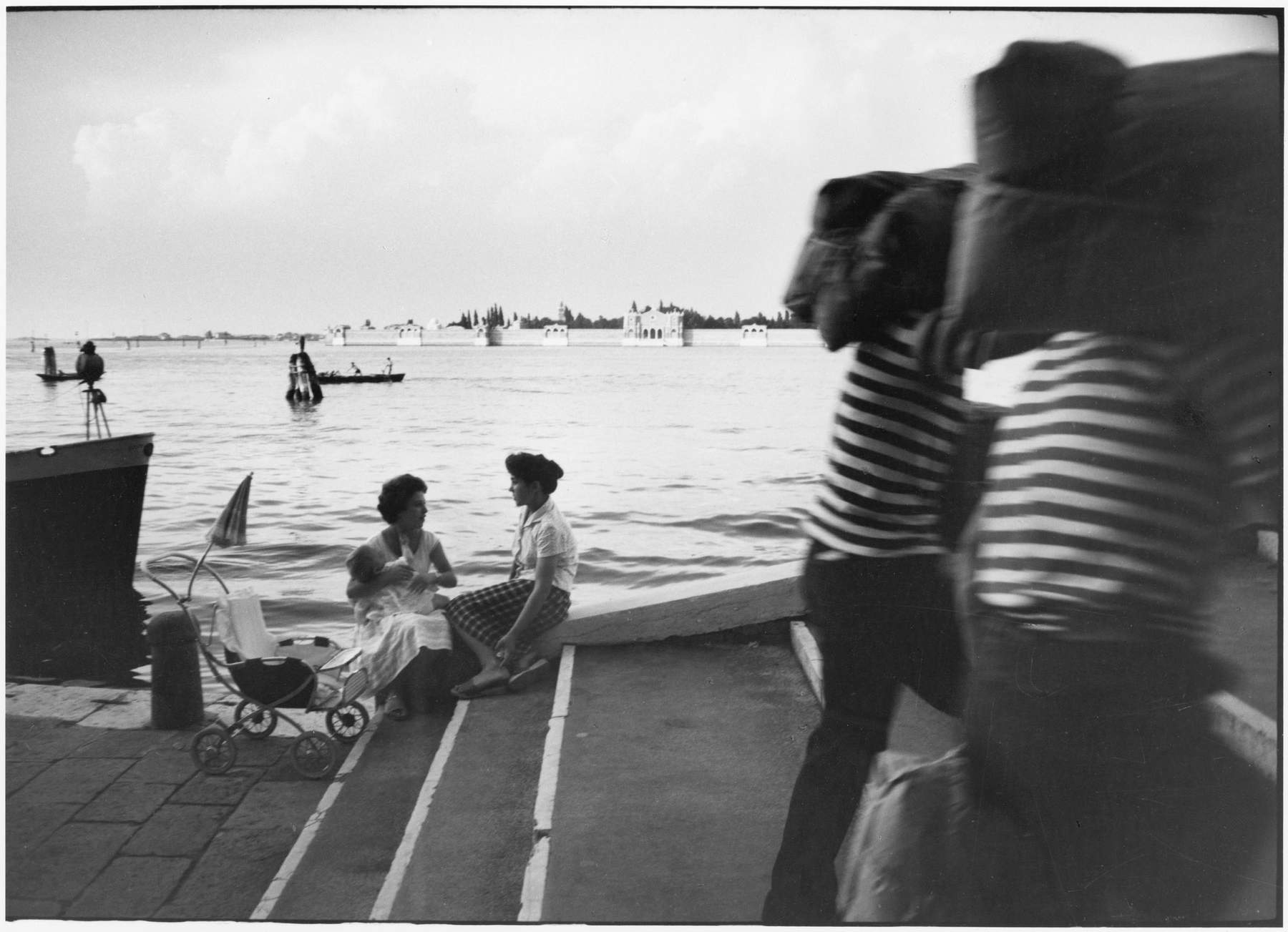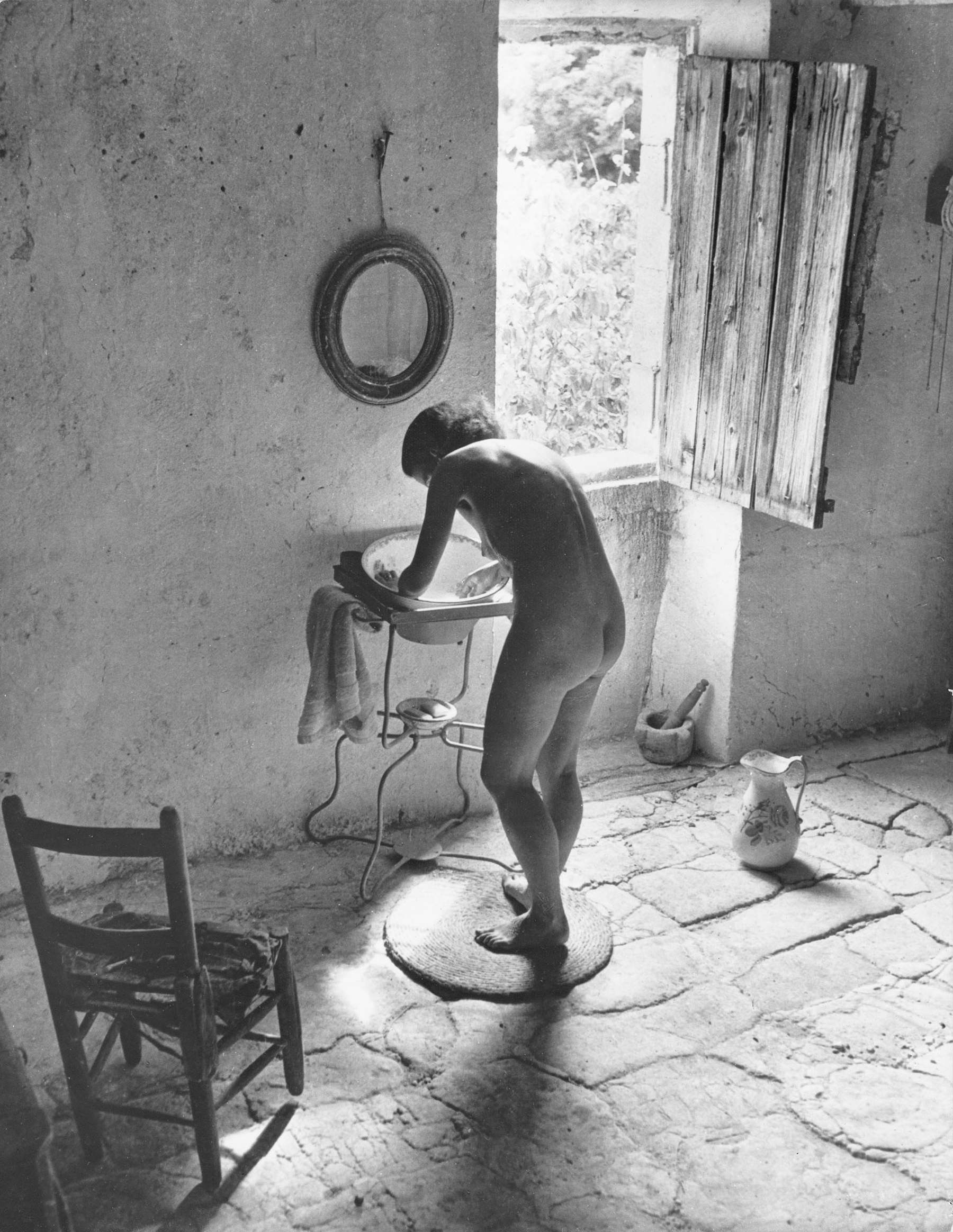by Sofia Busacca , published on 16/12/2018
Categories: Exhibition reviews
/ Disclaimer
Review of the exhibition 'Willy Ronis. Photographs 1934-1998' in Venice, Casa dei Tre Oci, from September 6, 2018 to January 6, 2019.
Slightly disheveled hair and a watchful gaze under a pair of glasses, a relaxed pose while leaning against a wall, cables and some light bulbs at his feet. This is how a young Willy Ronis (Paris, 1910 - 2009) appears in a 1951 flash self-portrait. A very long-lived photographer (he lived to be 99 years old), Ronis spent his entire life photographing, looking for the most suitable place to position himself (even at the cost of climbing on the frame of a bicycle to film an event) and always waiting for the opportune moment for that magical click that can capture the moment. Today and until January 6, 2019, the largest Italian retrospective dedicated to him is on view at the Casa dei Tre Oci in Venice, thanks to two exceptional partners, namely the Jeu de Paume in Paris and the French Ministry of Culture. The exhibition, curated by Matthieu Rivallin, traces Ronis’ entire career through 120 silver salt prints from the Mediatheque de l’architecture et du patrimoine.
A Frenchman of Jewish descent, Willy Ronis was encouraged by his friend Robert Capa (Budapest, 1913 - Thai Binh, 1954) to take up photography and become a photojournalist for Popular Front France. In 1941 anti-Semitic laws caused him to flee Paris but, following the Liberation, he took up his cameras again and devoted himself to a career as a reporter. Close to the Communist Party, he argued that there is no such thing as a minor genre in photography and became a master of industrial photography, devoting many of his shots to workers, their working environments, protests and strikes. His is a photography that can be described as politicized; never in his pictures do we see executives or “bigwigs” of industries, but always only the workers, the weakest ones filmed with great truth. When he visits workshops he searches for “unexpected, very interesting and impossible to reconstruct in retrospect,” for moments stolen from work in which he shows with authenticity the trade and its simple and true protagonists.
 |
| Willy Ronis, Self-portrait with flash, Paris, 1951. Ministère de la Culture - Médiathèque de larchitecture et du patrimoine Dist RMN-GP © Donation Willy Ronis |
 |
| Willy Ronis, Lorraine-Escaut factory, Sedan, France, 1959. Ministère de la Culture. Ministère de la Culture - Médiathèque de larchitecture et du patrimoine Dist RMN-GP © Donation Willy Ronis |
 |
| Willy Ronis, Occupation of the Citroen Javel factory, 1938. Ministère de la Culture - Médiathèque de larchitecture et du patrimoine Dist RMN-GP © Donation Willy Ronis |
 |
| Willy Ronis, Children of Belleville, Paris, 1959. Ministère de la Culture - Médiathèque de larchitecture et du patrimoine Dist RMN-GP © Donation Willy Ronis |
 |
| Willy Ronis, The little Parisian boy, 1952. Ministère de la Culture - Médiathèque de larchitecture et du patrimoine Dist RMN-GP © Donation Willy Ronis |
 |
| Willy Ronis, The Lovers of the Bastille, Paris, 1957. Ministère de la Culture - Médiathèque de larchitecture et du patrimoine Dist RMN-GP © Donation Willy Ronis |
 |
| Willy Ronis, Fondamenta Nuove, Venice, 1959. Ministère de la Culture - Médiathèque de larchitecture et du patrimoine Dist RMN-GP © Donation Willy Ronis |
 |
| Willy Ronis, Fondamenta Nuove, Venice, 1959. Ministère de la Culture - Médiathèque de larchitecture et du patrimoine Dist RMN-GP © Donation Willy Ronis " /> |
|
|
 |
| Willy Ronis, Provençal nude, 1949. Ministère de la Culture - Médiathèque de larchitecture et du patrimoine Dist RMN-GP © Donation Willy Ronis |
The French capital, Paris, is the favorite terrain in which Ronis hunts for images. A city he calls “timeless,” Paris always holds surprises for those who know how to wait for the right moment, the exact moment to take the picture. This was Ronis’ philosophy, able to wait even hours waiting for something to happen that would make the composition perfect. During his walks he captures picturesque scenes of dances, of children, of lovers, of happy kids at the amusement park, of busy passersby. He could be called a humanist photographer, as could Doisneau and so many others who loved to show the most diverse people, situations, attitudes. He looked at the world in a special way and could tell and show the poetry in shreds of everyday life. He loved to photograph the city streets, especially at night or after rain, because of the reflections, and of Paris he preferred the Belleville district, rich in stairways, still little photographed at the time. One photograph on display in the exhibition is one taken in 1948 in the Menilmontant neighborhood, and showing a glazier going up Rue Laurence-Savart: Ronis shoots the scene from an elevated vantage point and voluntarily includes the reflection of the puddle on the sidewalk and the rivulet, which go to balance the sky and the glass carried by the protagonist. Also featured in the retrospective is Ronis’s best-known photograph, also taken in Paris, that of The Lovers of the Bastille (1957). The two stand out against the Parisian landscape, cleared after the rain and still with a few clouds on the horizon. Portrayed in the sweetest and most enchanting attitude, they are not in the middle of the composition but completely to the side and even slightly cropped; despite this, they are the undisputed protagonists, the ones for whom time has stood still. Thanks to this photograph they have become eternal.
Willy Ronis is an insatiable photographer, always with camera in hand, very curious about everything around him. He takes many trips, good opportunities to take photographs without the constraints of a commission, and travels to New York, the Netherlands, East Berlin, Russia and many other places. He also travels to Italy and Venice, where, among other things, he won the gold medal at the 1957 Mostra Internazionale Biennale di Fotografia. He returned to Venice two years later, in 1959. A city that has a different time from all other places, a city rich in canals, water and the play of light, Venice represents fertile ground for Ronis and, in fact, here he travels around the working-class neighborhoods taking various photographs, some of which are exhibited in this retrospective. Suspended photographs, one might call them, just as the little girl portrayed in one shot while walking over a pier appears suspended. Photographs of waiting, in which Ronis waits and waits again to find the perfect moment when everything is in the right place, when there is a movement, a counterbalance that balances the scene and gives everything meaning. One day while walking Ronis sees two young mothers chatting, sitting on the steps of a bridge. He will later comment on that scene as follows, “I had nothing to motivate me particularly to cherish the memory of that moment. But my attention was awakened by male voices coming from the left. I quickly climbed a step to find the perfect spot and shot at the exact moment I had ideally chosen. Another risky photograph, because my dischargers were walking fast, and it would have been impossible to shoot twice. Apparently this kind of stress suits my temperament.”
Even though he worked on commission he always made some unsolicited shot that he then often liked and excited. He loved photography as much as he loved his family; he always carried his camera with him and often chose his wife Marie-Anne (e.g., portrayed in the famous “Provençal Nude,” also shown in this exhibition) and his son Vincent as his protagonists. And he was such a strong personality that he stopped working for Life magazine when it changed and rewrote the captions of his pictures. Willy Ronis loved life but even more he loved people, he who was called “the poet of geometry guided by the heart.” Strictly black and white, his photographs are moments of life that remain eternal and etched in the mind.
Warning: the translation into English of the original Italian article was created using automatic tools.
We undertake to review all articles, but we do not guarantee the total absence of inaccuracies in the translation due to the program. You can
find the original by clicking on the ITA button. If you find any mistake,please contact us.
